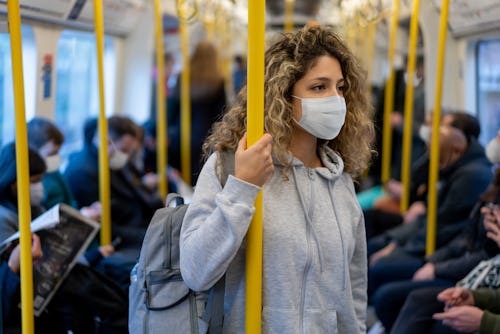Here’s how to dodge Omicron on public transportation
The safest seat for travelers looking to avoid COVID, according to new research.

During the first months of the pandemic, I was petrified of riding any form of public transportation, certain they were petri dishes where the ‘rona ran free. Since then, science has confirmed that public transit, especially when everyone inside it is masked, is not the demon we once thought it was. But two years into the pandemic, we’re learning to engage in harm reduction techniques as opposed to waiting till we eradicate this thing completely. A perfect example of this is a team of researchers who just created a model to predict how COVID could spread in ventilated buses — and discovered that where you sit on a bus can actually make a difference.
In an extremely detailed model published in Physics of Fluids, researchers from IBM Europe factored in air and droplet dynamics, heat transfer, evaporation, humidity, and ventilation systems, according to a press release. They recreated a scenario where a person was asymptomatic (as in, not coughing or sneezing) but talking. Their model recreated a ventilation system in which air flowed from the top of the bus and was extracted through the bottom near the window seats, which is how many public buses circulate air. The thought process behind all of this was that if we can figure out the movement of aerosols, the vehicle by which COVID travels, then we can do our best to dodge them.
The researchers found that air droplets from window seat passengers rose immediately and were less likely to reach other passengers’ noses or mouths. Meanwhile, air droplets from those in middle seats were most likely to reach passengers who were sitting in aisle seats, where air traveled downward. Droplets from people sitting in the aisle, meanwhile, were instantly sucked down by ventilation and less likely to reach others.
In conclusion, the place you are most likely to contract COVID in a bus, according to this theory, is where all the air in the bus begins to travel downwards: aisle seats. But if you have COVID (or suspect that you might), you’re most likely to infect other people if you sit in the middle. Although there have been theories on the best places to sit on planes, trains and buses since the pannie started, we have to take them all with cautious optimism; the best way to avoid catching COVID while traveling, at the end of the day, is to get vaccinated, boosted, masked up, and tested regularly.